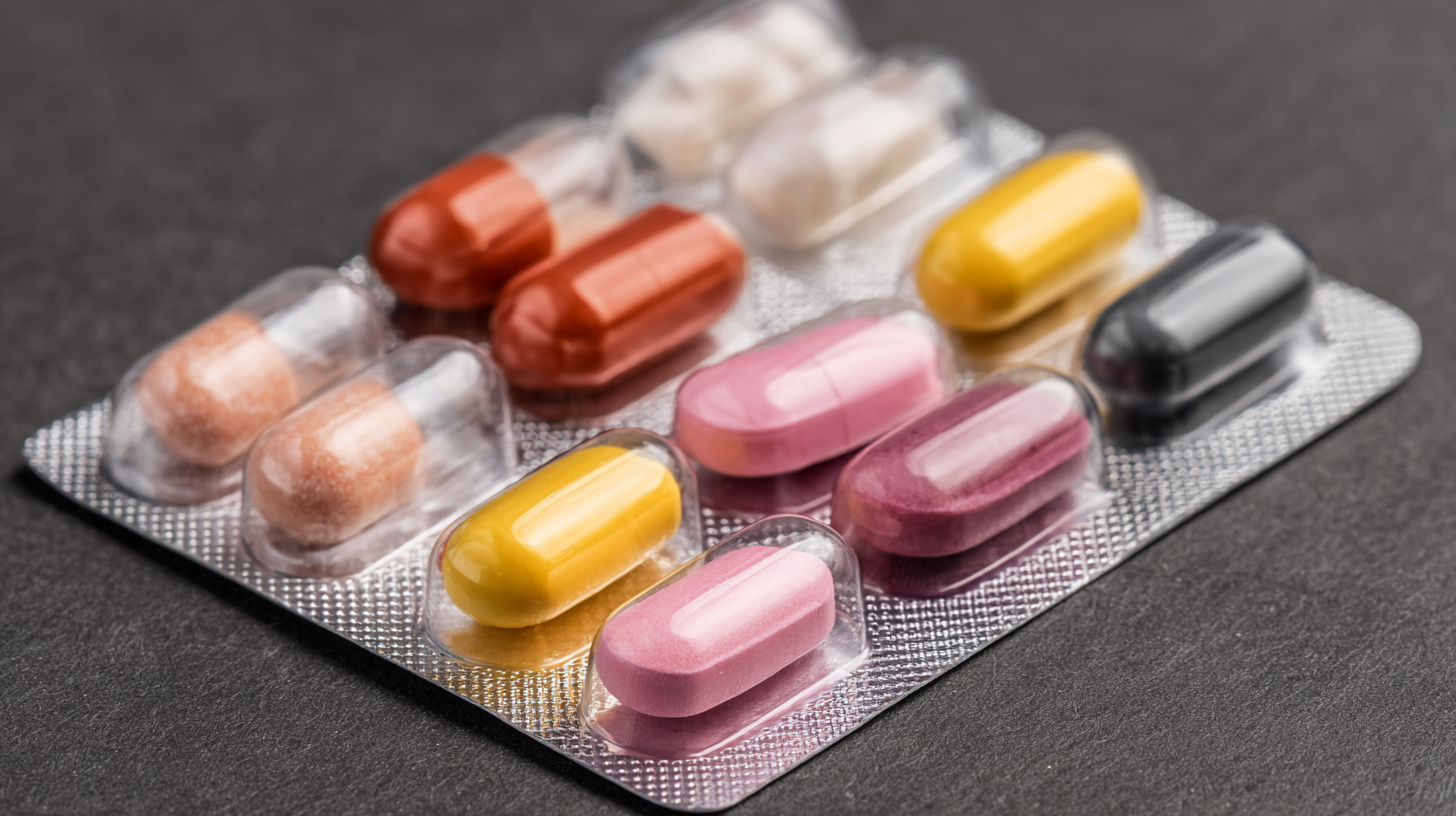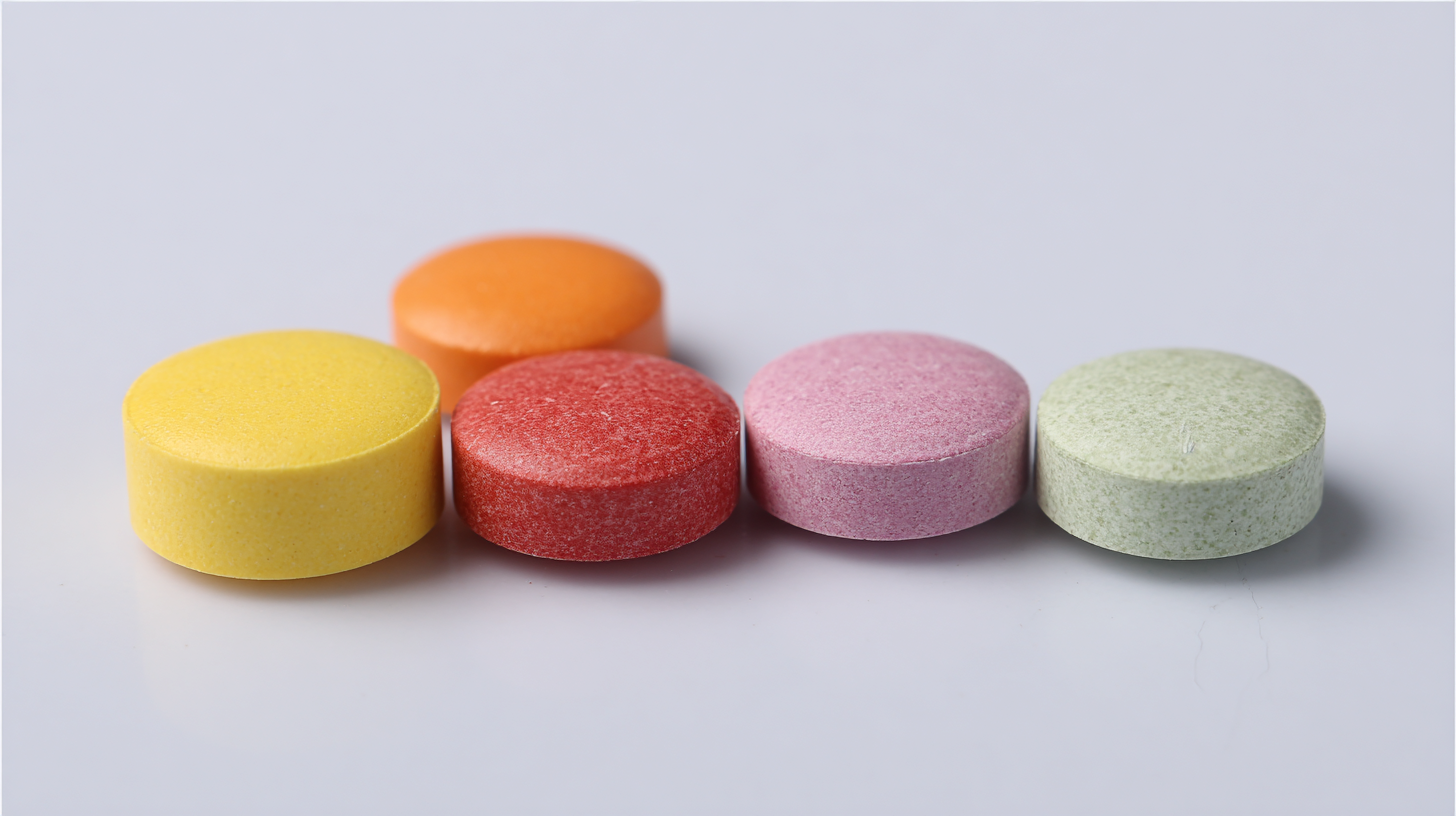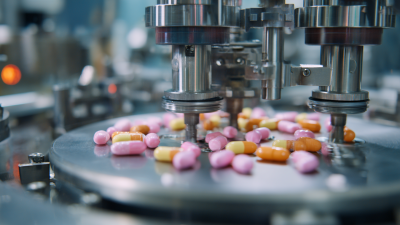
Blog
Top 5 Oral Dispersible Tablets for 2025 That You Need to Know About
In the rapidly evolving pharmaceutical landscape, Oral Dispersible Tablets (ODTs) are gaining significant traction as a preferred dosage form, particularly for pediatric and geriatric patients. According to recent industry reports, the global ODT market is projected to reach USD 15.55 billion by 2025, reflecting a compound annual growth rate (CAGR) of approximately 7.8% from 2020 to 2025. This surge is driven by several factors, including the increasing demand for patient-friendly drug delivery systems and the growing prevalence of chronic diseases necessitating efficient therapeutic options.
As healthcare providers continuously aim to enhance patient compliance, ODTs offer distinct advantages over traditional tablet forms. The ability to dissolve quickly in saliva without the need for water makes ODTs particularly appealing for individuals who face difficulties swallowing pills. Additionally, advancements in formulation technologies are paving the way for a broader range of medications to be transformed into oral dispersible formats, enhancing the versatility and application of these innovative dosage forms.
In light of this expanding market and the anticipated introduction of novel ODT formulations, it's essential for stakeholders to stay informed about the leading products set to dominate the market in 2025. This article will explore the top five Oral Dispersible Tablets that are poised to make a significant impact, ensuring that healthcare professionals and patients alike are equipped with the latest knowledge in ODT therapies.

The Rise of Oral Dispersible Tablets: A Game Changer for 2025
The rise of oral dispersible tablets (ODTs) is set to revolutionize the pharmaceutical landscape in 2025. With their innovative formulation, ODTs provide a convenient option for patients who face difficulties in swallowing traditional tablets. These fast-dissolving forms not only enhance patient compliance but also improve the bioavailability of active ingredients. As technology advances, the ODT market is expected to expand, driven by the growing demand for more adaptable and patient-friendly medication options.

The pharmaceutical excipients market is also seeing significant growth, with projections indicating it will surpass USD 15.43 billion by 2034, up from USD 9.31 billion in 2025. This boom can be attributed to the increasing utilization of excipients in the development of ODTs, as they play a crucial role in ensuring the stability and effectiveness of these formulations. As pharmaceutical companies continue to innovate and prioritize patient-centric solutions, the prominence of oral dispersible tablets will undoubtedly shape the future of medication delivery.
Key Benefits of Oral Dispersible Tablets Over Traditional Forms
Oral dispersible tablets (ODTs) offer several key advantages over traditional tablet forms, making them an appealing choice for many patients. One of the primary benefits is their ease of administration. ODTs dissolve quickly in the mouth without the need for water, making them ideal for individuals who may have difficulty swallowing pills, such as children, the elderly, or those with certain medical conditions. This feature enhances compliance, ensuring that patients take their medications as prescribed.

Another significant advantage of ODTs is their rapid onset of action. By dissolving in the oral cavity, the active ingredients can be absorbed into the bloodstream more quickly compared to conventional tablets that need to pass through the digestive system. This quicker absorption can lead to faster therapeutic effects, which is particularly beneficial for medications meant to alleviate acute symptoms, such as pain relief or nausea. Additionally, ODTs can enhance bioavailability, resulting in improved effectiveness of the medication. These benefits position oral dispersible tablets as a superior alternative in the pharmaceutical landscape, especially as we look towards their growing popularity in 2025.
Top Oral Dispersible Tablets: Efficacy and Patient Compliance
The efficacy of oral dispersible tablets (ODTs) lies in their unique formulation, which allows for quick disintegration in the mouth without the need for water. This characteristic not only enhances the bioavailability of the medication but also ensures swift absorption into the bloodstream. As patients increasingly seek convenient options for medication administration, ODTs emerge as a preferred choice, particularly for those with difficulties swallowing traditional tablets. The rapid onset of action coupled with the ease of use makes ODTs an effective solution for managing various conditions, from migraines to anxiety disorders.
Patient compliance is significantly improved with oral dispersible tablets, as they cater to the needs of diverse populations, including children and the elderly. The flavoring agents often included in these formulations help mask unpleasant tastes, further encouraging adherence. Additionally, the portability of ODTs eliminates the need for water, making it easier for patients to take their medications on-the-go. As healthcare continues to evolve, the development of innovative ODTs for 2025 promises to enhance both efficacy and patient experience, ultimately leading to better health outcomes.
Innovative Ingredients Revolutionizing Oral Dispersible Tablets
The landscape of oral dispersible tablets is undergoing a transformation, driven by innovative ingredients that enhance bioavailability and patient compliance. New formulation technologies, such as taste-masking agents and superdisintegrants, are being harnessed to improve the palatability of these medications, making them suitable for diverse patient populations, including children and the elderly. Ingredients like maltodextrin and cyclodextrin are playing a pivotal role in ensuring rapid disintegration in the mouth while maintaining stability.
Moreover, advancements in excipients are leading to the development of multifunctional components that not only facilitate easy dispersion but also provide therapeutic benefits. For instance, the incorporation of probiotics and nutritional supplements into oral dispersible tablets is gaining traction. These advancements are not just about improving the delivery of traditional drugs but also about integrating holistic wellness into everyday medicinal practices. In 2025, we can expect these ingredients to not only reshape how medications are administered but also to expand the therapeutic scope of oral dispersible tablets, ultimately enhancing patient outcomes.
Top 5 Oral Dispersible Tablets for 2025 That You Need to Know About
| Tablet Name | Innovative Ingredients | Benefits | Target Conditions |
|---|---|---|---|
| Tablet A | Natural Polymers | Quick dissolving, improved bioavailability | Anxiety, Depression |
| Tablet B | Micronized Active Ingredients | Enhanced absorption, faster onset of action | Chronic Pain, Inflammation |
| Tablet C | Rapid Release Technology | Immediate effect, user-friendly | Nausea, Gastrointestinal Disorders |
| Tablet D | Smart Coating | Flavor masking, improved adherence to mucosa | Allergies, Cold Symptoms |
| Tablet E | Bioenhancers | Increased efficacy, reduced side effects | Hypertension, Diabetes |
Future Trends in Oral Dispersible Tablet Technology and Development
The landscape of oral dispersible tablet (ODT) technology is evolving rapidly, with advancements that promise enhanced patient compliance and innovative delivery methods. According to a recent report by Research and Markets, the global ODT market is expected to grow at a CAGR of 7.5% from 2023 to 2030. This growth is driven by the increasing demand for rapid disintegration formulations, particularly among the geriatric and pediatric populations who may struggle with traditional oral dosage forms.
Future trends indicate a shift towards the incorporation of nanotechnology to improve bioavailability and formulation stability. Notably, companies are investing in the development of personalized medicine through ODT formats, utilizing 3D printing technology to create tablets tailored to individual patient needs. This customization not only enhances therapeutic efficacy but also addresses the growing trend towards patient-centric healthcare.
Tips for consumers: When considering ODTs, it's essential to consult healthcare professionals about the most suitable options for specific conditions. Additionally, pay attention to the manufacturing quality—selecting products from reputable companies ensures adherence to industry standards, which is crucial for safety and efficacy. Lastly, be aware of the formulation ingredients, especially if there are dietary restrictions or allergies involved.
Top 5 Oral Dispersible Tablets for 2025
This chart displays the predicted advancements in key factors for oral dispersible tablets by 2025. The data highlights expected improvements in areas such as patient compliance and taste masking, which are crucial for the adoption of these medications.
Related Posts
-

Unlocking Efficiency: How Capsule Filling Equipment Revolutionizes the Supplement Industry
-

What is a Mixer Powder and How Can It Transform Your Production Process?
-

Top Strategies for Enhancing Efficiency with Blister Packing Machines in Pharmaceutical Manufacturing
-

What is Capsule Filling Equipment and Its Impact on Pharmaceutical Production Efficiency?
-

Future Innovations in Best Cannabidiol From Hemp Industry by 2025
-

How the Best Tablets Press Machine is Shaping the 2025 Industry Tech Landscape



